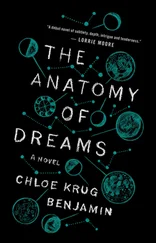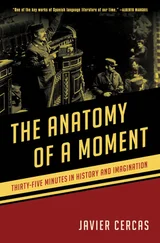By the end of the month, I’d finished organizing Keller’s patient files by case number. But one was missing: no matter how hard I searched, I couldn’t find number 111. I paged through each file, checking to make sure it wasn’t sandwiched inside a different folder. When I found nothing there, I turned on Keller’s computer, but everything in the ancient Dell was protected. What would Keller’s password be? I tried mills, meredith, fortbragg, sanfrancisco . No go. Next, I tried snakehollow , but the password box shuddered, as if shaking its head, and went blank again.
“Come on, Keller,” I said. I pictured a ghost Keller standing inscrutably before me, a Keller hologram — his hands woven daintily together, his slight smile impassive. “Give it up.”
Rolling my neck, I swung back to the keyboard and typed hollowsnake. The computer made a gurgling noise of happiness, and the password box sprang to one side. I laughed; could it really have been so easy? Each e-mail was now readable, each link clickable. But two hours later, I was even more alarmed: in Keller’s documents folder, I found scans of every file but 111.
I could feel a headache coming on as the fluorescent lights flickered in the ceiling. It was three in the afternoon, though you’d never have known from inside the windowless office. I’d propped the office door open with a paperweight so I could hear if someone was coming, but the hallway was silent. It would be easy to lose your mind down there, I thought; maybe the three of us already had. The top of Keller’s desk was devoid of personal items: there were only a couple of Post-its, a tiny dish of paper clips, and a Martha’s Vineyard mug (HAPPY CHAPPY!) full of identical ballpoint pens.
I spun around in his desk chair, rubbing my eyes with the heels of my hands. If Keller wanted to hide something, where would he put it? His own computer was too risky, too obvious. The same went for his hard-copy files: he would never leave a paper trail. As the chair whirled, I passed the cabinets, the propped-open door, the mini refrigerator where Gabe and I kept our dinners. On top of the refrigerator was a slender laptop, closed like a mouth, its battery light blinking green. It was Gabe’s. He often left it here overnight, especially if he decided to walk home from the lab. It was heavy, an early Dell he’d covered in band stickers — Led Zeppelin, Radiohead — and bandaged, over the years, with packing tape.
Gingerly, I opened it. Gabe had a password, too, but I knew that one without thinking: 33173, his dad’s zip code in Florida. It had been the combination for his gym lock back at Mills. In Gabe’s documents, I found electronic files that went back to patient 110: Stuart Cappleman, the dining hall worker at Mills.
It’s strange; I don’t remember my body heating up or my heart rate speeding — the marks of my old panic attacks, though they weren’t diagnosed as such for another year — when I finally found file 111. In the storm’s unblinking eye, all the training I’d done leapt to my defense: my practiced, even keel, my ability to stay calm when dealing with the most hysterical patients. I didn’t read it yet. I wanted Gabe to be with me. So I tucked the laptop in my backpack, locked the office door, and drove home.
It was a bare, cool day at the end of March. The smallest leaves had budded with the cautiousness of all plants born in early spring. The heat was on as I came through the door and discarded my layers. A carnation Gabe had given me for Valentine’s Day sat in a narrow vase next to the sink, its neck keeling elegantly toward the counter. I hung my sleeping-bag coat on the peg where it would sit, untouched, until I packed it haphazardly three weeks later. Gabe sat at the kitchen counter with a glass of milk. Abruptly, the heat shut off. The dust motes and down feathers that had been swirling in front of it swooped to the ground.
“You left your laptop at the lab,” I said.
A blank haze came over his eyes like a passing cloud. Then they sharpened again.
“Oh?” he asked, but his voice was too flat, his shoulders too still.
“I found something in it,” I said. “It’s a file, number one eleven. We don’t have it in hard copy — Keller must have destroyed it — and it isn’t on his computer, either. But I found it on yours. I don’t know whose it is, Gabe, but I know something’s off.”
The words spilled out of me with relief. Even as I walked to him, holding his computer in my arms, I was irrationally convinced of his innocence. I wanted to believe that Keller had uploaded the file, that Gabe had never seen it before. After all, if Keller wanted to keep something from me, there was no hiding place more brilliant than Gabe’s computer — Gabe, the person I loved, the person I was least likely to suspect. I could finally prove to him that Keller had kept secrets from us, big ones; that he didn’t trust us and we had no reason to trust him. It would be difficult for Gabe to accept, but I would help him. We could go anywhere in the country: find different jobs, spin ourselves new. I pictured us in the pocked, lunar deserts of Utah or a seaside town in Maine, eating toast with jam at a light-cast kitchen table. There would be moisture in the air. Buoyancy.
Gabe had frozen. But he did not seem to be in shock; he listened to me with the stoic commitment of someone carrying out orders. I opened the computer and double-clicked the file.
It took no more than a glance at the form for me to realize what it was. I had seen hundreds of them before. Now my heart began to knock against my ribs. I should have looked at the file by myself at the lab. How had I not looked at it?
“Did you know about this?” I asked.
“Sylvie,” said Gabe. His hands found their way to my shoulders. “Let me explain.”
The words on the page were startlingly clear. Weren’t they supposed to blur, change form and run away from me, at a time like this? Outside the kitchen window, there was a scrabble of feet and a rush of air. A clump of blackbirds rose from a tree and scattered like pebbles.
My shoulders shifted beneath his hands — the small, barely perceptible movement of an animal readying to strike.
“Read it to me,” I said.
Gabe removed his hands.
“Sylvie.”
“Read it.”
He sat down beside me and took the laptop in his hands. Ordinary noises were amplified: the dull creak of the floorboards beneath his socks, the crack of his jaw as he opened and closed it.
“‘Patient name.’” His voice was quiet and muffled. “‘Sylvia Patterson. Female. Patient number — one eleven.’”
I had never seen him cry before, not like this. He was silent, his face rigid, each drop pooling at the side of his lower lid before beginning its own slow, meandering trajectory down his cheek.
“‘Birth date — January fifth, 1980. Referring physician — Adrian Keller. Marital status — single. Chief complaint — trouble sleeping at night. Unwanted behaviors during sleep.’”
How many times had I seen this form, filled it out myself? I knew what question came next.
“For how many months or years?” I asked. I was biting down so hard that my teeth shook.
Gabe made a barely audible noise. It sounded more like his voice cracking than a single word.
“Nine months.”
“I don’t understand. Nine?”
I still had some hope that this was a mistake, that Gabe knew nothing of what he was reading. But he held my gaze.
“Nine,” he said.
My voice came out as if dispatched by someone else.
“Typical amount of time it takes to fall asleep,” I said.
“Twenty minutes.”
“Typical number of awakenings per night?”
“None.”
“Sleepwalking episodes, and how many?”
Читать дальше












